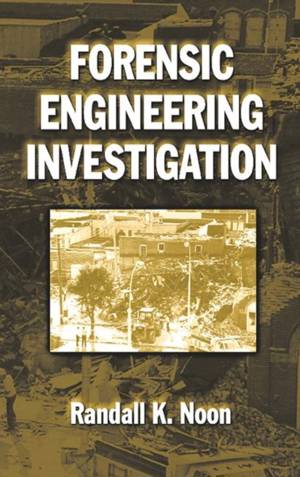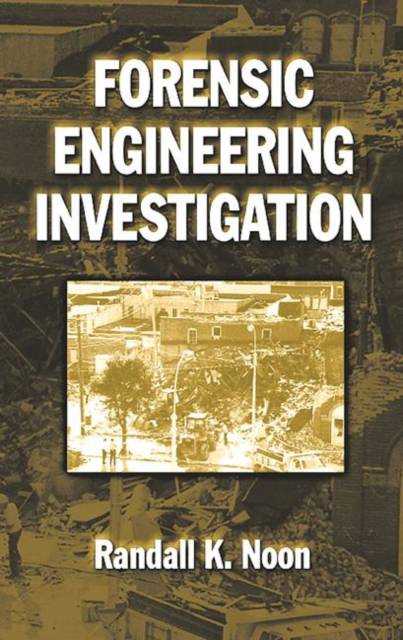
- Afhalen na 1 uur in een winkel met voorraad
- Gratis thuislevering in België vanaf € 30
- Ruim aanbod met 7 miljoen producten
- Afhalen na 1 uur in een winkel met voorraad
- Gratis thuislevering in België vanaf € 30
- Ruim aanbod met 7 miljoen producten
Zoeken
Omschrijving
Forensic Engineering Investigation is a compendium of the investigative methodologies used by engineers and scientific investigators to evaluate some of the more common types of failures and catastrophic events. In essence, the book provides analyses and methods for determining how an entity was damaged and when that damage may have legal consequences. The material covers 21 common types of failures, catastrophic events, and losses that forensic engineers routinely assess. The range of topics include wind and blasting damage to structures, vehicular accidents, fires, explosions, hail damage to roofs and exteriors, lighting damage, and industrial guarding accidents. Additionally, the book offers an extensive discussion of the scientific method as it applies to forensic science and provides tips on organizing and writing an investigative report. The book also supplies the applicable codes and standards that regulate the profession, discusses the role of the forensic engineer in court proceedings, and addresses the role management plays in industrial safety. Each chapter is self-contained, highly specific, and succinct. Even more important, the analysis in each chapter is tailored to the answering of questions usually posed in the particular circumstances under discussion. The author does not skimp on the mathematical and scientific underpinnings of the subject matter. In that sense, Forensic Engineering Investigation contains the "good stuff" that is typically omitted in less challenging texts.
Specificaties
Betrokkenen
- Auteur(s):
- Uitgeverij:
Inhoud
- Aantal bladzijden:
- 484
- Taal:
- Engels
Eigenschappen
- Productcode (EAN):
- 9780849309113
- Verschijningsdatum:
- 25/10/2000
- Uitvoering:
- Hardcover
- Formaat:
- Genaaid
- Afmetingen:
- 160 mm x 239 mm
- Gewicht:
- 775 g

Alleen bij Standaard Boekhandel
+ 732 punten op je klantenkaart van Standaard Boekhandel
Beoordelingen
We publiceren alleen reviews die voldoen aan de voorwaarden voor reviews. Bekijk onze voorwaarden voor reviews.








